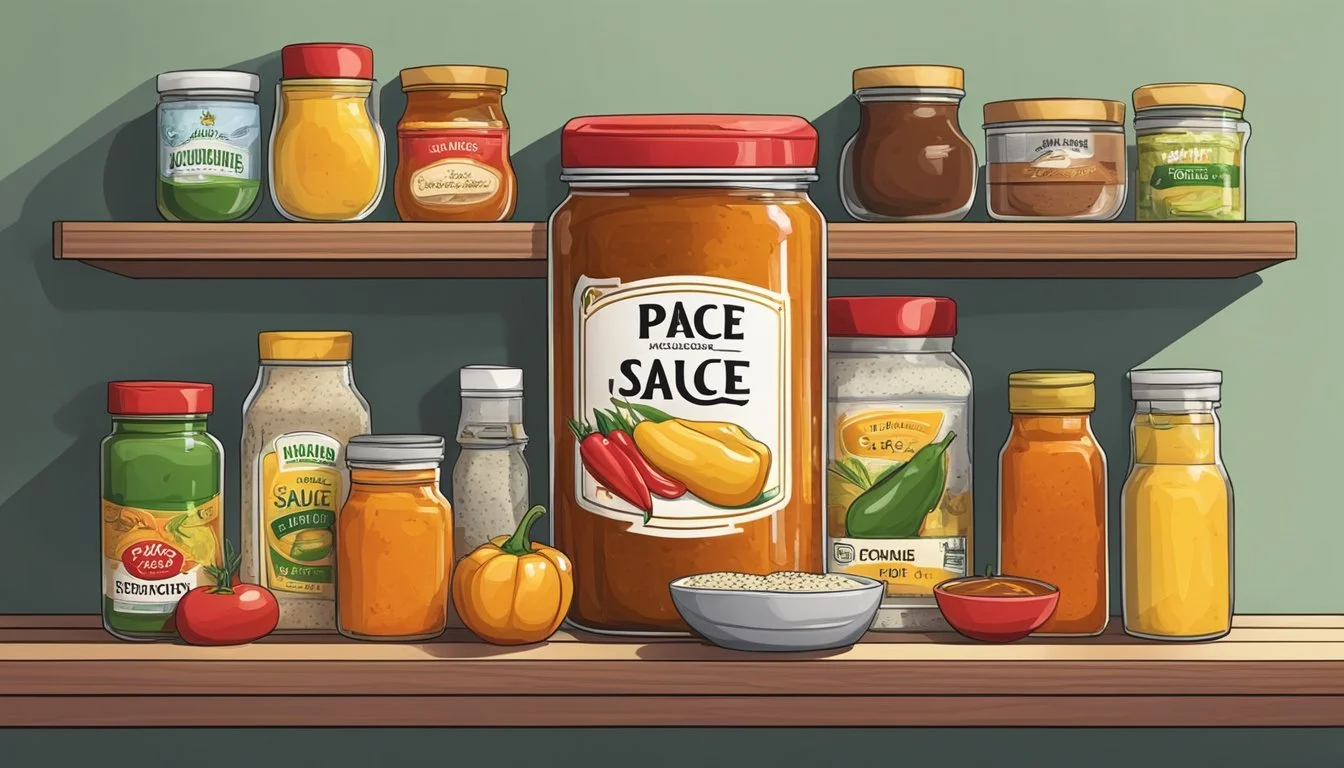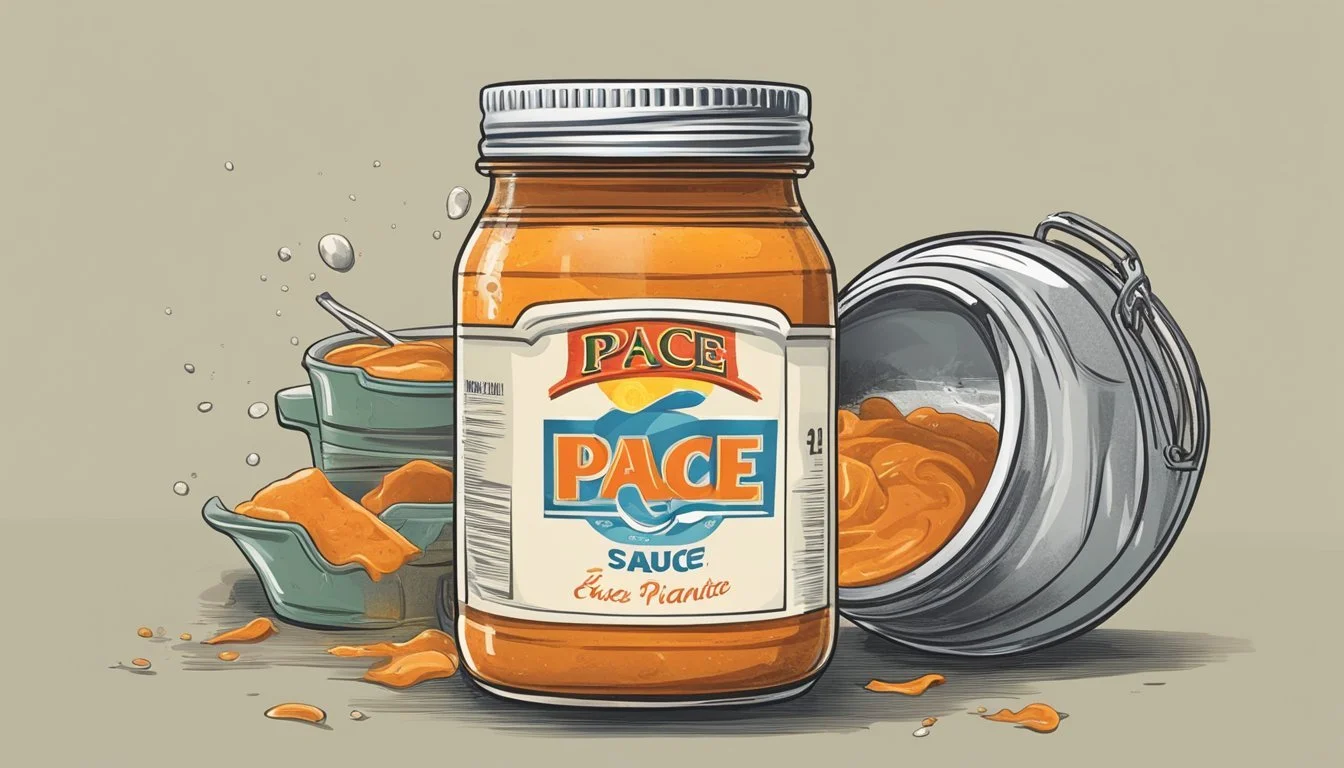How Long Does Pace Picante Sauce Last?
Shelf Life and Storage Tips
Pace Picante sauce, a popular condiment known for its bold flavor and versatile use in various recipes, has a specific shelf life that consumers should be aware of for maintaining its optimal quality and taste. Once a jar of Pace Picante sauce is opened, it typically lasts up to one month when stored in the refrigerator. The sauce's longevity is a result of the acidic ingredients that act as natural preservatives, such as tomatoes and vinegar.
The preservation of the sauce's quality over time hinges on proper storage conditions. Refrigeration is crucial after opening to prevent the proliferation of bacteria and to retain the desired texture and flavor. The sauce may remain safe to consume beyond the one-month mark, but there could be a noticeable decline in its flavor and texture, which could affect the overall culinary experience.
While the general consensus suggests a one-month period for opened Pace Picante sauce in the fridge, it is always recommended to check the expiration date provided by the manufacturer to ensure safety and quality. As with any consumable product, if there is any visible mold, off-putting odors, or unusual color changes, the sauce should be discarded immediately to avoid potential health risks.
Understanding Picante Sauce
Picante sauce, a well-known condiment in the culinary world, adds a bold and zesty flavor to dishes. This section delves into its history, nutritional content, culinary applications, health benefits, distinctive characteristics, and how it compares with other condiments.
History and Popularity
Picante sauce, with roots in Mexican cuisine, has been enjoyed for its spicy and flavorful kick. It gained commercial popularity with brands like Pace, established in 1947 in San Antonio, Texas. Pace Picante sauce has since become a household name, synonymous with Tex-Mex cooking.
Nutritional Profile
Picante sauce generally consists of tomatoes, onions, jalapeño peppers, and a blend of spices. Nutritionally, it contains:
Calories: Low, making it a diet-friendly option.
Sodium: Moderate levels, so consumption should be balanced with other dietary sodium sources.
Dietary Considerations: Often vegan and vegetarian; usually gluten-free, catering to various dietary needs.
Common Uses in Cooking
Primarily used as a condiment or dip for chips and tacos, picante sauce is also versatile in the kitchen, where it can be employed as a marinade, salad dressing, or ingredient in various recipes and dishes.
Health Benefits
Rich in tomatoes and jalapeños, picante sauce contains antioxidants. The capsaicin in peppers is known for potential health benefits, including anti-inflammatory properties and metabolism boosting effects, although these benefits require moderate consumption within a balanced diet.
Distinctive Features
Picante sauce has a smoother, saucier texture compared to its chunkier cousin salsa. Heat levels can vary, allowing consumers to choose according to their preference for spice intensity. The bold flavor, derived from the fresh ingredients and spices, is a signature of picante sauce.
Comparison with Other Condiments
When compared to ketchup, mustard, or mayonnaise, picante sauce offers a spicier alternative that can enhance the flavor profile of dishes without overwhelming them. Unlike hot sauce, which primarily delivers heat, picante sauce provides a more complex flavor profile. It's less dense than barbecue sauce or hoisin and typically contains fewer calories and less sugar.
Proper Storage Conditions
To ensure the longest shelf life and maintain the quality of Pace Picante sauce, it's crucial to understand and adhere to proper storage conditions.
Pantry Storage
Before opening, Pace Picante sauce should be stored in the pantry at room temperature. The pantry, or a cabinet, should ideally be a cool, dry place away from any sources of heat and light. Under these conditions, the unopened sauce typically keeps its quality until the "Best Before" date imprinted on the jar.
Refrigerating After Opening
Once opened, the sauce must be refrigerated to prevent spoilage. The refrigerator will slow down the growth of bacteria and mold. As a guideline, open jars of Pace Picante sauce should be kept in a refrigerated state and consumed within one month for best quality.
Freezing for Longevity
Although not commonly recommended, Pace Picante sauce can be frozen to extend its shelf life. Freezing should be done in an airtight container as it helps to minimize the presence of air and potential freezer burn. Note that freezing may alter the texture once thawed.
Impact of Temperature on Shelf Life
Temperature fluctuations can significantly affect the shelf life. Pace Picante sauce should be stored consistently at a cool temperature. Frequent changes between room temperature and refrigerated can shorten its shelf life and alter its flavor.
Protection from Spoilage Factors
Preservatives in Pace Picante sauce help to protect against spoilage, but proper storage is necessary to maximize this protection. The sauce should be stored away from contaminants and spoilage factors such as exposure to air and other foods that could introduce bacteria.
Avoidance of Direct Sunlight and Heat
The jar of Pace Picante sauce must be kept away from direct sunlight and sources of heat to prevent degradation of the product. Heat can cause the sauce to spoil prematurely, while sunlight can affect its flavor and color stability.
Signs of Spoilage and When to Discard
Pace Picante sauce's freshness and quality can be assessed accurately by noting several signs of spoilage. Knowing when to discard the sauce is crucial to avoid potential food safety concerns.
Visual Indicators of Spoilage
When examining Pace Picante sauce for spoilage, visual changes are an immediate giveaway. One should look for:
Discoloration: A shift from the sauce’s usual vibrant red/tomato color to a dull or brownish hue may indicate spoilage.
Mold: The presence of mold, which could appear as fuzzy spots of white, green, or black, is a definitive sign the sauce should be discarded.
Changes in Smell and Taste
The freshness of salsa is often reflected in its smell and flavor. Tell-tale signs include:
Foul Smell: An off-putting or sour smell is a clear indicator the sauce has gone bad.
Altered Flavor: If the sauce tastes significantly different from when it was first opened, it may have spoiled.
Textural Changes
The texture of Pace Picante sauce is expected to be consistent. Deviations suggest the product has deteriorated:
Thickening or Thinning: A sauce that has thickened considerably or become watery should not be consumed.
Unusual Consistency: Any unexpected changes in consistency, such as lumpiness, suggest spoilage.
Food Safety Concerns
Spoiled food can lead to food poisoning; thus, it's important to pay attention to:
Time out of Refrigeration: If the sauce has been left out at room temperature for over 2 hours, there is a risk of bacterial growth and it should be discarded.
Textural and Olfactory Indicators: Any changes in texture or smell could harbor bacteria that cause food poisoning.
Expiration Date Importance
The "Best Before" or expiration date is an essential guideline for food safety:
Best Before Date: This date should not be ignored as it gives a timeline on the expected shelf life of the product.
Post-Open Shelf Life: After opening, Pace Picante sauce commonly remains fresh for up to one month when stored correctly in the refrigerator. Beyond this period, the risk of spoilage increases, and it should be carefully examined before use.
Maximizing Picante Sauce Freshness
To ensure your Pace Picante sauce retains its quality and freshness, adhering to optimal handling, storage, and usage guidelines is critical. By following these strategies, one can enjoy the sauce's robust flavor for as long as possible after opening.
Handling and Usage Tips
Upon using Pace Picante sauce, one should always use clean utensils to prevent contamination. It's advisable to avoid eating directly from the jar which could introduce bacteria and hasten spoilage.
Assessing Freshness and Quality
The freshness of Pace Picante sauce can be determined by its appearance, smell, and taste. If the sauce develops an off odor, taste, or mold, it should not be consumed. Always check these factors before use.
Optimizing Storage Conditions
For optimal storage, Pace Picante sauce should be kept in the refrigerator at a temperature below 40°F. An unopened jar of Pace Picante sauce should be stored in a cool, dry place away from direct sunlight to maintain its shelf life.
Extending Usable Life through Cooking
Incorporating Pace Picante sauce into cooked dishes can extend its usable life. Cooking kills bacteria and can help to preserve the sauce's flavor and quality for a longer period, especially if the dish is subsequently stored correctly.
Recommendations for Bulk Purchases
Consumers should consider their consumption rate when purchasing Pace Picante sauce in bulk. Grocery stores often offer larger sizes which are cost-effective but may exceed the recommended usage timeframe once opened.
Guidelines for Post-Opening Usage
After opening, one should refrigerate Pace Picante sauce to extend its shelf life. Generally, an opened jar of Picante sauce can last for up to one month when refrigerated.
Adding Preservatives for Shelf-Stability
Although adding preservatives to store-bought Picante sauce is not typical, some recipes may benefit from the addition of acidic ingredients like vinegar or lime juice to maintain freshness, especially if one intends to store the repurposed sauce for extended periods.






